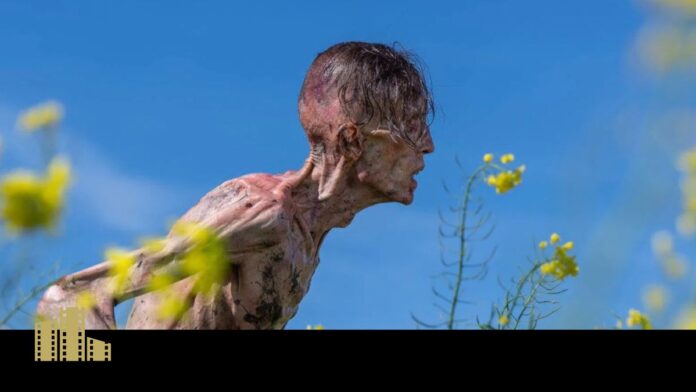Nearly three decades after the Rage Virus first plunged Britain into chaos, 28 Years Later claws its way back into the cinematic spotlight—this time with original creators Danny Boyle and Alex Garland reunited at the helm. In the years since 28 Days Later redefined the zombie genre, we’ve seen a less memorable sequel (28 Weeks Later), Brexit, and a global pandemic that eerily called back to Cillian Murphy’s walk through a desolate London. Strangely, the legacy of 28 Years Later feels more intertwined with those real-world upheavals than with its own cinematic predecessor.
Set on the isolated island of Lindisfarne, the film introduces us to Jamie (Aaron
Taylor-Johnson), a hardened father, and his son Spike (Alfie Williams), who’s about
to face the infected mainland as a kind of apocalyptic rite of passage. His mother Isla (Jodie Comer), remains behind—sick, vulnerable and deeply affected by years of isolation. What follows is a harrowing, emotional, and at times dreamlike journey across a Britain left to rot in stasis.
As expected from Boyle and Garland, this isn’t your standard horror sequel. The film takes bold swings—both visually and narratively. Cinematographer Anthony Dod Mantle creates a frenzied, almost hallucinatory aesthetic using iPhones and
unconventional angles, giving scenes a surreal, urgent brutality. The editing is hyper-kinetic, the violence raw and brutal. It’s 28 Days Later by way of folklore and fever dream.

At its heart, this is a story about family, loss, and coming of age under impossible
circumstances. The film’s best moments come in the intense encounters with the
infected and the quieter, more character-driven moments. Alfie Williams delivers a breakout performance, grounding the film with sensitivity. Jodie Comer is excellent as Isla, bringing emotional weight to a role that could’ve easily felt sidelined. Ralph Fiennes also makes a memorable impression as the enigmatic Dr. Kelson, whose sanctuary of the dead adds a chilling, philosophical layer to the film’s second half.
Garland’s script is packed with ideas – some overt, others quietly unsettling. Britain’s isolation, the mythologizing of history, and the consequences of generational trauma all bubble beneath the surface. That said, not every concept lands with equal clarity. The film sometimes poses more questions than it answers – but with this being the first of a planned trilogy, perhaps that’s intentional.
The biggest misstep lies in its ending. Without spoiling anything, it pivots into
something far stranger and franchise-focused, clearly setting up a sequel. It’s a
jarring tonal shift that doesn’t quite match with what came before. While this type of “tease-the-next-film” storytelling is now common (see Dune: Part Two, Spider-Verse etc.), it risks undermining the emotional payoff of the film you’re actually watching.
Still, despite its flaws, 28 Years Later is a gripping, thoughtful, and frequently stunning return to a Britain ravaged by rage. It honors the original while taking bold risks, delivering a cinematic experience that’s both familiar and refreshingly unique. Whether the next film (releasing in January 2026 and directed by Nia DaCosta) sticks the landing remains to be seen – but if this is the first step, it’s a hell of a reintroduction.



